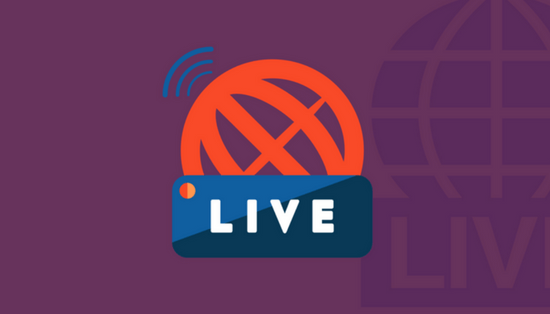 With the recent introduction of Facebook Live and Instagram Live, live video is quickly gaining traction.
With the recent introduction of Facebook Live and Instagram Live, live video is quickly gaining traction.
Although the benefits of live video have been discussed numerous times, it’s not for everyone.
There are a few common challenges that should be taken into account when deciding whether to use this strategy.
You Have to Be a Born Speaker
To some degree, live video streaming can be regarded as public speaking.
Although you are not physically standing in front of thousands of people worrying about every aspect of your body language, live broadcasting takes a lot of courage.
But you are still speaking in real time with almost no room for a mistake.
While not everyone is born as confident as Dale Carnegie, you have to know your topic inside out and be able to improvise in response to unexpected questions.
There is No Way to Outsource the Work
Unlike written content and evergreen video production, there is no way to outsource the work.
Although you can always hire a camera man to follow you around or a host to do the live streams on your behalf, the result may not be as effective.
The real potential and power of this marketing medium comes from an ongoing series of content from an authentic brand personality.
Therefore, if your primary aim is to share your valuable knowledge and experience, you have to be the one on the front-line, producing content at the right time in the right place.
There is No Turning Back
Once you’ve started a live video stream, you need to commit to seeing it through to its conclusion.
Viewers may knock you off balance by throwing in provocative questions or raising controversial topics.
It’s important to address them calmly, and remain objective with your responses.
The worst thing to do is to become defensive when confronted by these individuals.
There is no escape hatch once you start a live video stream.
Take negative comments with a grain of salt and stick to your topic.
Building an Audience is Tough
Unless you are a well-established individual in your industry, generating a high volume of viewers for your live video stream is likely to become your biggest challenge.
Like with any other form of content delivery, the primary aim is to accumulate awareness and drive people to your content.
Hence, before you jump head first into the world of live video streaming, it’s important to find your target audience.
Plan your content and gain an audience through traditional mediums before deploying live video streaming.
Otherwise, your message may go unnoticed.
Tricky Timezones
Probably the biggest disadvantage of live video streaming over the traditional ways of presenting content is dealing with time zones.
Your audience could be spread around the world with oceans in between.
So, if you are trying to reach as many people as possible, you first need to analyze where the majority of viewers are coming from and plan your schedule accordingly.
It’s worth keeping in mind that you should not only focus on the main geographical location but try to deliver your content to as many people as possible.
Whether that means live-streaming twice a day or publishing a recorded archive of your live video stream on your blog, never compromise on your audience.
Live Video Has a Short Lifespan
Unlike evergreen content marketing tactics, live video streaming has a relatively short lifespan.
For instance, if you’re using Instagram Live, as soon as you finish broadcasting, the video vanishes instantly.
This leaves your followers with no other option but to tune in when you’re live.
On the other hand, Facebook Live allows you to post archives of your live video recordings on your timeline.
Facebook Live also gives you the option to download the footage afterwards.
Weigh your options carefully before jumping onto a particular platform.
If you’re planning to repurpose your live video streams in the future, Instagram Live won’t be the ideal option to go for.
Challenging to Analyze Real-Time Feedback
Analyzing live video feedback through social media is an exhausting and overwhelming task.
If you manage to get thousands of viewers, the number of comments can be overwhelming.
And not all of them are relevant to the topic.
If your live video stream’s objective is to gather constructive feedback on the subject you spoke about, your best option is to direct people to a relevant landing page on your website.
This approach will also filter out comments from the typical “haters” whose main objective is to frustrate the broadcaster.
Live video streaming has its challenges, it can be a great way to engage with and learn more about your audience.
Do you have tips for hosting a successful live video stream? Share them in the comments.